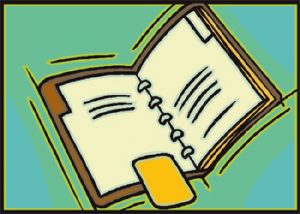I decided to do something different this week – I’m writing my posts for both blogs (here and on www.CatherineJaime.com) on the same topic. But if you happen to read both, no worries, the posts are similar but still different.
The topic came to me last week when I was preparing for a trip with my oldest daughter. We got through the massive preparation list we had by breaking down the large list into smaller lists that we could tackle each day.
A Talk for New Homeschoolers
In the midst of those last hectic days before our trip I also gave a small talk for new homeschoolers. That was when the idea of writing two versions of this topic came to me. The homeschool mom I was primarily counseling seemed very overwhelmed by what lay ahead of her as she looked into homeschooling for the first time in the upcoming school year.
Breaking Down the Tasks of Homeschooling
While beginning to homeschool can be a daunting task, it helps to break it down into smaller pieces. Because we live in Alabama I will approach this from the perspective of an Alabama homeschooler, but the overall tasks would be similar for homeschoolers in any state.
Philosophy of Education?
If you are beginning to homeschool, my suggestion for where you should begin may differ a bit from what others tell you. I base my advice on 35 of years of homeschooling and more than 30 years of assisting other homeschoolers (20 of those here in Alabama). My thought is that new homeschoolers should first consider what their philosophy of education is. As you continue to homeschool your philosophy may change. But at the beginning, consider what you think is important. Are you looking for a cookie cutter education, what I would call “school at home”? Or are you wanting to focus more on a diversity of education? Do you think textbooks are critical or are you willing to look for other educational materials? I speak in more depth about different philosophies in my short booklet on CurrClick – Philosophy of Education, and in a chapter of my homeschool book, Organized Ramblings.
Your Homeschool Package/Homeschool Covers
 Once you have an idea of your philosophy, you can start thinking about what your homeschool package should look like – will you be focusing on textbooks or non-textbook alternatives? Hand in hand with that, as a new homeschooler in Alabama you will have to decide whether to join a cover or choose one of the other options. If I was still homeschooling I would still be in a cover group. Of all the options, it is the one that makes the most sense to me. But each homeschooler has to make that decision. Choosing a cover should go hand in hand with the decision of what your homeschool package will contain.
Once you have an idea of your philosophy, you can start thinking about what your homeschool package should look like – will you be focusing on textbooks or non-textbook alternatives? Hand in hand with that, as a new homeschooler in Alabama you will have to decide whether to join a cover or choose one of the other options. If I was still homeschooling I would still be in a cover group. Of all the options, it is the one that makes the most sense to me. But each homeschooler has to make that decision. Choosing a cover should go hand in hand with the decision of what your homeschool package will contain.
Decisions are not Irreversible
One of the things to keep in mind throughout all these decisions is that they are not irreversible. Homechool packages can be changed. Even homeschool groups can be changed. We were fortunate to have chosen a cover when we moved to Alabama that we were quite happy with. But many homeschoolers I knew during those two decades were not as fortunate the first (or sometimes second) time around. But changing covers was always an option for them.
First Tasks for Homeschoolers
So, all of a sudden that overwhelming task of starting to homeschool can be broken down to these three major tasks: Figuring out your philosophy of education; choosing your homeschool package; and choosing your homeschool cover.
 Your Loose Plan
Your Loose Plan
From there I strongly recommend that homeschoolers (new or otherwise) make a very loose plan for the school year. Plans are important – but remember these are not plans that should be written with pen; they should be written in pencil. Changes are inevitable. Don’t fight them; it is better to embrace them as part of the journey.
Daily Plans or Weekly Plans?
Another decision you will want to make in conjunction with that plan is whether you want to make daily plans or weekly plans. Daily plans are likely the most common, but I preferred to make my plans on a weekly basis. I liked the flexibility that weekly plans gave me. Nothing fancy is really needed for keeping said plans – a Word document or a notebook with note paper both work just fine. But for those who prefer a slightly more formal place to put their lesson plans, I put together several easy and inexpensive options that have been very popular with many of the homeschoolers in our area.
From there it’s just a matter of putting one foot in front of the other – taking on each day/week as it comes up. Make the changes you need to make, and enjoy the journey!
Next year will be easier, and I really believe you can accomplish this.
Happy educating.
Cathy




